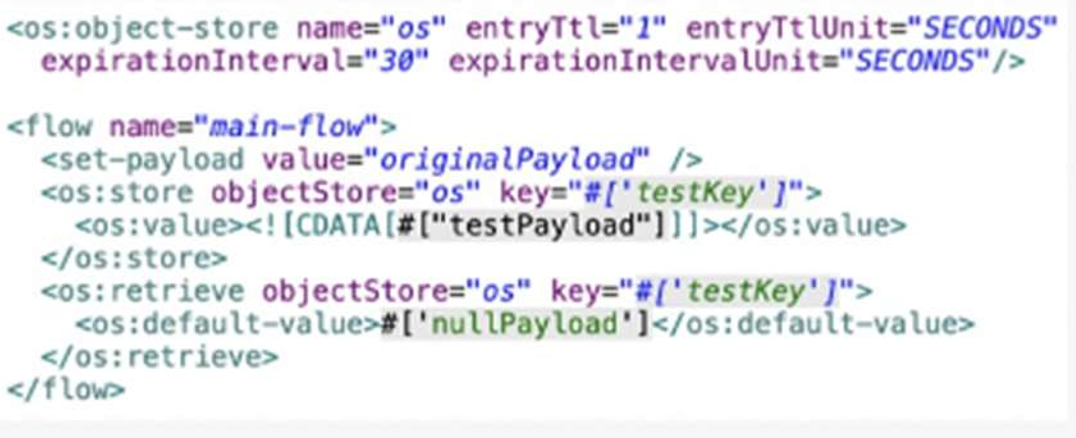Salesforce Certified MuleSoft Developer II (Mule-Dev-301) Exam Questions
- Salesforce Developer Certifications
- Salesforce MuleSoft Developer II Certifications
- Topic 1: Expose Production-Ready Anypoint Platform-Managed APIs from Mule Applications: This topic includes implementing versioning of API-related artifacts and configuring custom or out-of-the-box API policies. Additionally, it covers server-side caching of API invocations using policies, requesting access to APIs, and implementing HTTP callbacks.
- Topic 2: Implement Maintainable and Modular Mule Applications and Their Maven Builds: This topic covers modularizing and optimizing Mule application Maven build configurations. It discusses implementing Maven-based automated deployments to Mule runtimes. The topic also includes executing MUnit tests with Maven.
- Topic 3: Implement Monitorable Mule Applications: This topic encompasses exposing Health Check endpoints from a Mule application and implementing effective logging. It also includes changing log levels, aggregating, and analyzing logs. Furthermore it involves monitoring Mule applications and implementing message correlation.
- Topic 4: Implement Performant and Reliable Mule Applications: It discusses implementing ObjectStore and ensuring fault-tolerant, performant, and traceable message passing with VM and AnypointMQ connectors. The topic also covers fault-tolerant invocations of HTTP-based APIs, validating assertions and messages.
- Topic 5: Secure Data at Rest and in Transit: This topic involves implementing secure, environment-dependent properties management. It discusses creating, packaging, and distributing keys and certificates. Moreover, the topic also includes exposing and invoking APIs over HTTPS.
Free Salesforce Salesforce Certified MuleSoft Developer II (Mule-Dev-301) Exam Actual Questions
Note: Premium Questions for Salesforce Certified MuleSoft Developer II (Mule-Dev-301) were last updated On Oct. 08, 2025 (see below)
Refer to the exhibit.
A Mute Object Store is configured with an entry TTL of one second and an expiration interval of 30 seconds.
What is the result of the flow if processing between os'store and os:retrieve takes 10 seconds?

When implementing a synchronous API where the event source is an HTTP Listener, a developer needs to return the same correlation ID back to the caller in the HTTP response header.
How can this be achieved?
When implementing a synchronous API where the event source is an HTTP Listener, Mule automatically propagates some message attributes between flows via outbound and inbound properties. One of these attributes is correlation ID, which is returned to the caller in the response header by default as MULE_CORRELATION_ID. Reference: https://docs.mulesoft.com/mule-runtime/4.3/about-mule-message#message-attributes
A new Mule project has been created in Anypoint Studio with the default settings.
Which file inside the Mule project must be modified before using Maven to successfully deploy the application?
A scatter-gather router is configured with four routes:Route A, B, C and D.
Route C false.
Which type of cache invalidation does the Cache scope support without having to write any additional code?
- Select Question Types you want
- Set your Desired Pass Percentage
- Allocate Time (Hours : Minutes)
- Create Multiple Practice tests with Limited Questions
- Customer Support
Naomi
4 days agoAn
6 days agoThaddeus
12 days agoHerminia
13 days agoLyda
1 months agoDestiny
1 months agoQuinn
1 months agoKiley
3 months agoSherita
3 months agoShantell
4 months agoHana
4 months agoIsidra
5 months agoCary
6 months agoTrina
6 months agoEdward
6 months agoAlishia
7 months agoDortha
7 months agoValentine
7 months agoLeota
8 months agoFannie
8 months agoGoldie
8 months agoLeanna
9 months agoChana
9 months agoAnna
9 months agoCristal
9 months agoDusti
10 months agoDallas
10 months agoSantos
10 months agoCecilia
10 months agoVincent
10 months agoMartin
11 months agoMalissa
11 months agoRosendo
11 months agoMicheline
11 months agoAlline
11 months agoKizzy
12 months agoLevi
12 months agoCelestine
12 months agoStarr
1 years agoLaila
1 years agoMaxima
1 years agoPrincess
1 years agoBrittni
1 years agoTheola
1 years agoMaile
1 years agoRyann
1 years agoLonna
1 years agoSherly
1 years agoDyan
1 years agoBeckie
1 years agoJanet
1 years agoAsuncion
1 years agoDerrick
1 years agoMayra
1 years agoViva
1 years ago